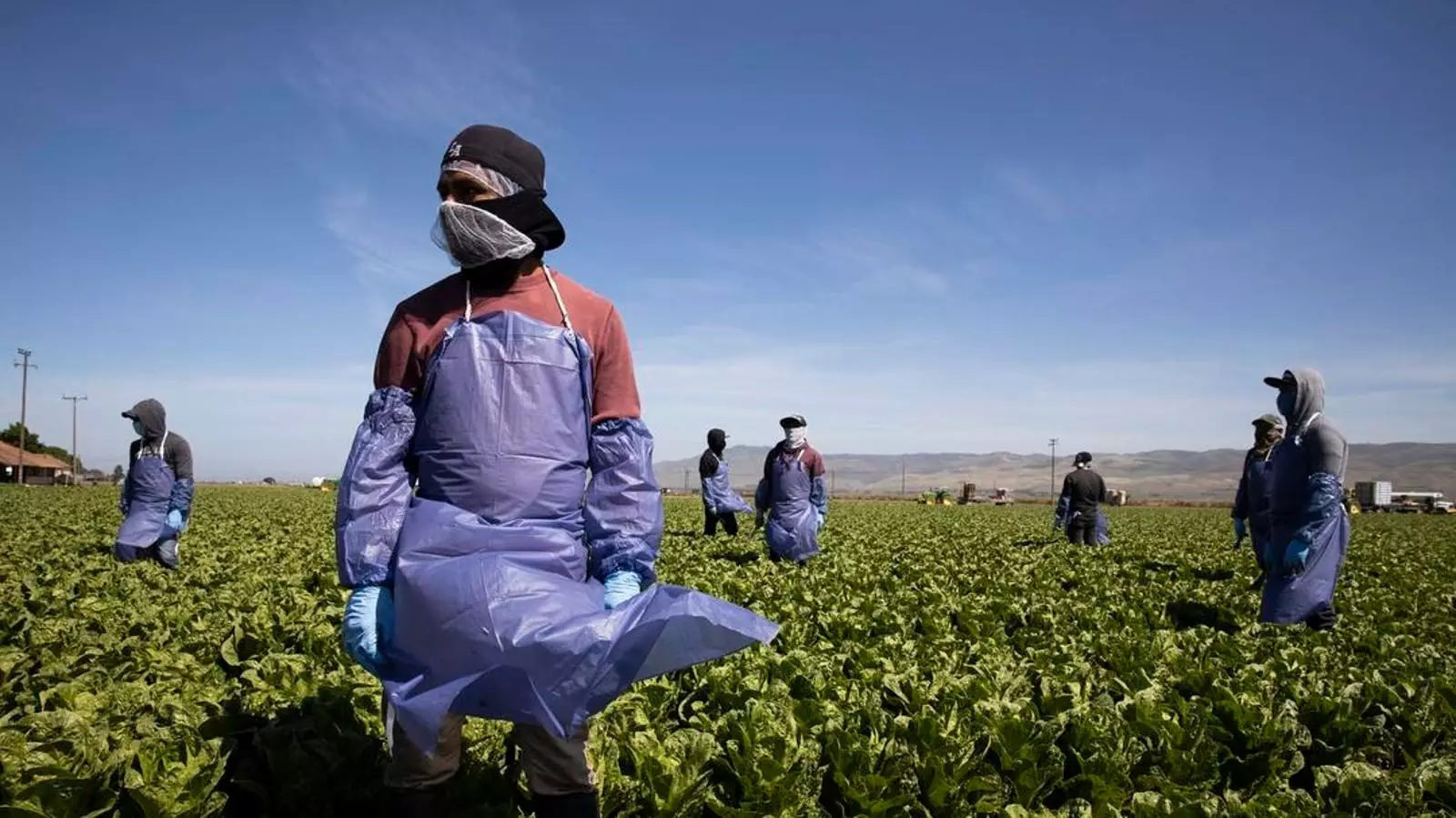A burgeoning legal battle is unfolding as a recent lawsuit takes aim at a new rule implemented by the U.S. Department of Labor (DOL) concerning the H-2A visa program. The rule, designed to enhance labor rights for agricultural workers, is facing staunch opposition from various farm and business organizations. These groups argue that the DOL is unlawfully extending labor protections to H-2A visa holders, invoking immigration laws to impose collective labor standards that have traditionally not applied to agricultural workers.
The lawsuit brings to light the tension between labor rights advocacy and agricultural operational needs, highlighting the potential consequences for the farming industry if the DOL’s rules are sustained.
The H-2A visa program allows U.S. employers to employ foreign workers for seasonal agricultural labor when American workers are unavailable. Legal work visas play a crucial role not only in filling essential labor gaps in the agricultural sector but also in mitigating illegal immigration. The increasing number of H-2A visas issued, particularly to Mexican workers, aligns with a notable decrease in unauthorized border crossings. In fact, the Department of State documented a rise in H-2A visas from approximately 37,149 in 2006 to over 310,000 in 2023, correlating with a significant drop in apprehensions along the U.S.-Mexico border.
On June 28, 2024, the DOL published a final rule mandating that agricultural employers provide assurances against intimidation and discrimination for H-2A workers engaging in various self-organizational activities. While the DOL asserts that the rule does not impose a requirement for employers to recognize labor unions or engage in collective bargaining, the plaintiffs emphatically argue that the rule’s parameters resemble those of the National Labor Relations Act (NLRA)—an act that, historically, has not covered agricultural workers.
The various organizations involved in the lawsuit, including the U.S. Chamber of Commerce and the American Farm Bureau Federation, contend that this regulatory expansion is inconsistent with the legislative framework established by Congress, which exempted agricultural workers from the NLRA’s protections.
The lawsuit, filed in Mississippi, argues three main points against the legality of the DOL’s H-2A rule. Initially, the plaintiffs claim that while the Immigration and Nationality Act allows the DOL to obtain limited assurances from employers, it does not grant the authority to enforce sweeping labor protections. Furthermore, they emphasize the need to interpret immigration law in conjunction with existing labor laws, specifically highlighting the restriction on federal involvement in agricultural labor relations as codified by the NLRA.
Moreover, the plaintiffs invoke First Amendment rights, referencing a relevant case that underscores an employer’s ability to communicate viewpoints regarding workplace rights. This grievance stems from the belief that the new regulations could infringe upon employers’ rights to convey information to their employees regarding their work conditions and related issues.
The ramifications of this lawsuit could be profound, particularly for American farmers and ranchers who rely heavily on the flexibility provided by the H-2A program. Critics of the DOL rule assert that it introduces complex layers of regulation that could hinder employers’ capacity to manage their operations, leading to significant labor shortages during peak agricultural seasons. With courts in multiple states already placing stays on this regulation, the urgency to challenge the DOL’s authority in these matters escalates as time progresses.
Jon Baselice, a representative from the U.S. Chamber of Commerce, has voiced concerns that compliance with the new rule would detrimentally affect the agricultural workforce. He argues that the new requirements not only violate employers’ rights but also disrupt established legal frameworks that have historically guided agricultural employment and labor relations.
In response to the backlash, the DOL maintains that the rule is a critical advancement to bolster worker protections and address findings from previous court decisions. They contend that the regulations will enhance accountability within employer practices regarding foreign labor recruitment and mitigate potential law evasion.
As the legal proceedings continue, the broader implications of the DOL’s H-2A rule on labor relations within agriculture, as well as on immigration practices, remain pivotal topics of debate. Stakeholders from all sectors must stay vigilant as the courts deliberate on the significance of balancing labor rights with the operational realities facing America’s agricultural industry.
While the future of the H-2A regulations awaits judicial review, the interplay of legal, economic, and social forces will undoubtedly shape the trajectory of agricultural labor dynamics in the United States for years to come.


Leave a Reply